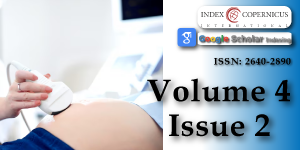Determinants of health seeking behaviour of women with obstetric fistula in south- south and south east, Nigeria: A review of the impact of availability and quality of health care services through a cross-sectional study
Main Article Content
Abstract
Background: Obstetric fistula is a condition that results from obstructed labour, which occurs when the baby cannot pass through the mother’s birth canal because it either does not come head first or is too large for her pelvis. Prompt medical intervention, often including Caesarean section, permits a safe delivery for both mother and child. Despite this possibility, yearly, thousands of women across the country receive no such aid and their labour is a futile agony lasting between three and five days, with uterine contractions constantly forcing the baby, usually head first, against the organs of the pelvic and unyielding pelvic bone resulting in Vesico Vaginal Fistula (VVF). The main thrust of this study was to examine how health system factors affect health seeking behaviour of women with obstetric fistula in Akwa Ibom and Ebonyi States, Nigeria.
Methods: Qualitative and descriptive research approaches were adopted for the study and a total sample of two hundred and sixteen (216) respondents comprising of one hundred and fifty (150) post fistula repair operative patients and sixty six (66) health workers were purposively selected using simple random techniques. The data were analyzed using thematic analysis and tables of frequency.
Results: The respondents views showed that availability of treatment centre and quality of health care services influenced health seeking behaviour of women with obstetric fistula in Nigeria.
Conclusion: The study indicated that health seeking behaviour of women with obstetric fistula is a major challenge in Nigeria. Establishment and proper equipment of obstetric fistula treatment centres as well as subsidization of the cost of treatment to allow women with this health problem to access health care services are strongly recommended. Therefore, government at all level and non-governmental organizations need to educate the women and create awareness on the causes and dangers of VVF.
Article Details
Copyright (c) 2021 Peters Grace E, et al.

This work is licensed under a Creative Commons Attribution 4.0 International License.
Ololade O. This marriage will kill me. The Nation. 2014. http://thenationonline.net/new
Kabir M. Medico social problems of patients with vesico vaginal fistula in Murtala Mohamed Specialist Hospital in Kano. Bioline Int Ann African Med. 2004; 2: 54-57.
Abokaiagana A. Experiences of women with obstetric fistula in the Bawku East District of the Upper East Region College of Health Sciences. School Nur. 2010; 67-110.
Adebayo T. VVF prevalence soars in Nigeria. Newswatch Times. 2015. http://mydailynewswatchtimesng.com
Leo R. Nigeria: Nigeria has highest prevalence of obstetric fistula. 2016. allafrica.com
Nabob O. Ebonyi tops in VVF cases – USAID. Daily Trust Newspaper. 2017. dailytrust.com.ng
Eyo UE, Udobang C. Influence of maternal variables on the occurrence of vesico vaginal fistula in Uyo Local Government Area of Akwa Ibom State, Nigeria. Research on Humanities and Social Sciences. 2014; 4: 164-168.
Umeha C. FG urged to increase facilities to tackle obstetric fistula. Daily Independent. 2016. www.dailyindependentnig.com
Bill G. Sample size formulas. 2021. williamgodden.com
Ajaegbu OO. Perceived challenges of using maternal health care services in Nigeria. Arts Soc Sci J. 2013; 7: 54 - 65.
Federal Ministry of Health. National Strategic framework for the elimination of fistula, 2012-2017. Federal Ministry of Health, Abuja. 2012; 98-54.
Gbola F. Vesico-vagina fistula and psychosocial well-being of women in Nigeria. 2007; www.emedicine.com/medtopic3321.htm
Ibekwe PC. Health care problems in developing countries. Med Practition Rev. 2010; 1: 9–11.
Edeh SB. 12,000 women develop VVF every year in Nigeria. Vanguard. 2015. http://www.vanguardngr.com
Adesegun F. Maternal mortality situation and determinants in Nigeria. Federal Ministry of Health. Abuja. 2004.
Sina OJ, Jegede LI, Ibikunle AM. Socio-economic status and utilization of healthcare facilities in rural Ekiti, Nigeria. Standard Res J. 2014; 2: 001-043.
Federal Ministry of Health. National strategic framework for the elimination of obstetric fistula in Nigeria (2011-2005). Abuja. 2012; 76-99.
Warren C, Agbonkhese R, Ishaku S. Formative research on assessing barriers to fistula care and treatment in Nigeria. USAID, Fistula Care Plus, Engerder Health and Population Council. 2016.

